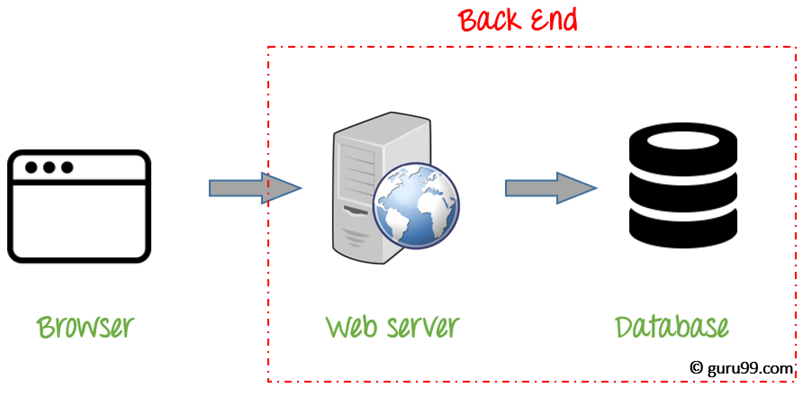Table of Contents
Introduction:
Back-end development is a critical component of web development, responsible for the server-side functionality of a website or web application. It involves managing and storing data, processing requests, and providing data to the front-end of a website. In this comprehensive guide, we will cover the key technologies and techniques used in back-end development, providing a solid foundation for mastering server-side technologies.

Server-side Technologies
Back-end development is built using server-side technologies, which are responsible for handling the data and processing requests made by the front-end of a website. There are many different server-side technologies available, including PHP, Ruby on Rails, Node.js, and Python, each with its own strengths and weaknesses. In this section, we will explore these technologies in more detail.
Database
A database is a collection of data that is stored and organized on a server. Back-end developers use databases to store and manage data for a website or web application, including user information, product information, and website content. There are many different types of databases available, including SQL databases and NoSQL databases, each with its own strengths and weaknesses.
API (Application Programming Interface)
An API is a set of rules that allow different software applications to communicate with each other. In the context of back-end development, an API allows the front-end of a website or web application to communicate with the back-end, allowing data to be exchanged and processed. APIs are an essential aspect of back-end development, as they provide a way for the front-end and back-end to communicate and work together.
PHP
PHP is a server-side scripting language that is widely used for back-end development. It is known for its ease of use and is a popular choice for building dynamic websites and web applications. PHP is used to process data, communicate with databases, and generate HTML and CSS to be displayed on the front-end of a website.
Ruby on Rails
Ruby on Rails is a back-end framework built using the Ruby programming language. It is known for its speed, scalability, and ease of use, and is a popular choice for building dynamic, data-driven websites and web applications. Ruby on Rails is used to process data, communicate with databases, and generate HTML and CSS to be displayed on the front-end of a website.
Node.js
Node.js is a back-end framework built using the JavaScript programming language. It is known for its fast performance, scalability, and versatility, and is a popular choice for building real-time, data-driven websites and web applications. Node.js is used to process data, communicate with databases, and generate HTML and CSS to be displayed on the front-end of a website.
Python
Python is a general-purpose programming language that is widely used for back-end development. It is known for its ease of use and is a popular choice for building dynamic, data-driven websites and web applications. Python is used to process data, communicate with databases, and generate HTML and CSS to be displayed on the front-end of a website.
RESTful API
A RESTful API is a type of API that uses the Representational State Transfer (REST) architectural style. RESTful APIs are designed to be easy to use, scalable, and flexible, and are used to provide access to data and functionality in a web application. Back-end developers use RESTful APIs to allow the front-end of a website or web application to interact with the back-end, exchanging data and processing requests.
SQL (Structured Query Language)
SQL is a programming language that is used to manage and manipulate data stored in a database.
SQL (Structured Query Language) is a programming language that is used to manage and manipulate data stored in a database. It is a standard language for interacting with relational databases, allowing users to create, read, update, and delete records in a database. SQL is used by back-end developers to manage the data stored in a database and to perform tasks such as creating tables, inserting data, and executing queries to retrieve data.
SQL has a simple syntax and is easy to learn, making it a popular choice for database management. It is used by many different database management systems, including MySQL, Oracle, and Microsoft SQL Server. SQL is a crucial aspect of back-end development, as it provides the means to interact with data stored in a database, and is an essential skill for back-end developers.
SQL statements are used to perform various tasks in a database, including:
- Creating tables and defining the structure of data stored in the database
- Inserting data into the database
- Updating existing data in the database
- Deleting data from the database
- Retrieving data from the database using queries
SQL queries are used to retrieve data from a database based on specific conditions, and can be used to perform complex data manipulation and analysis. SQL also supports transactions, allowing multiple operations to be executed as a single, atomic unit of work.
In conclusion, SQL is an essential tool for back-end development, and is widely used for managing and manipulating data in relational databases. It is a simple and versatile language that provides the means to interact with data stored in a database, and is an important skill for back-end developers.

